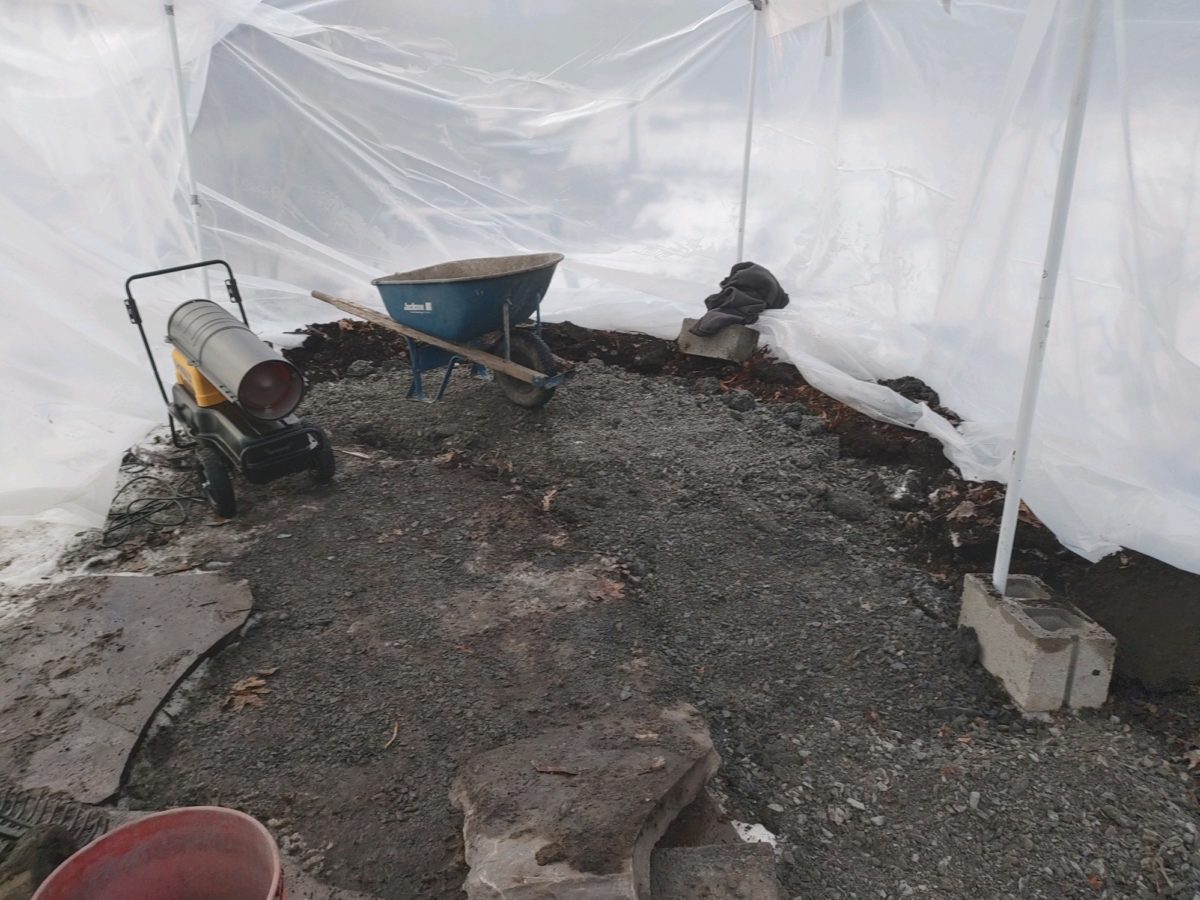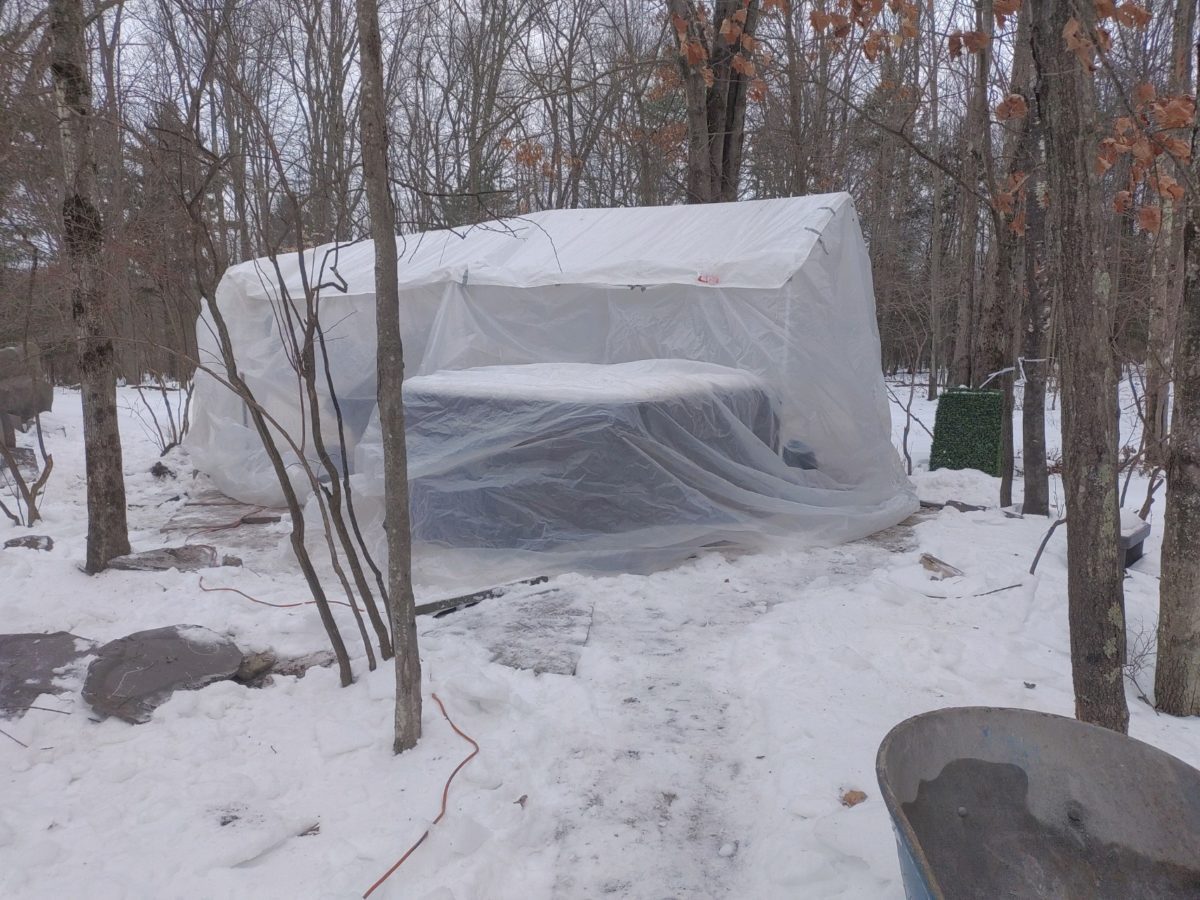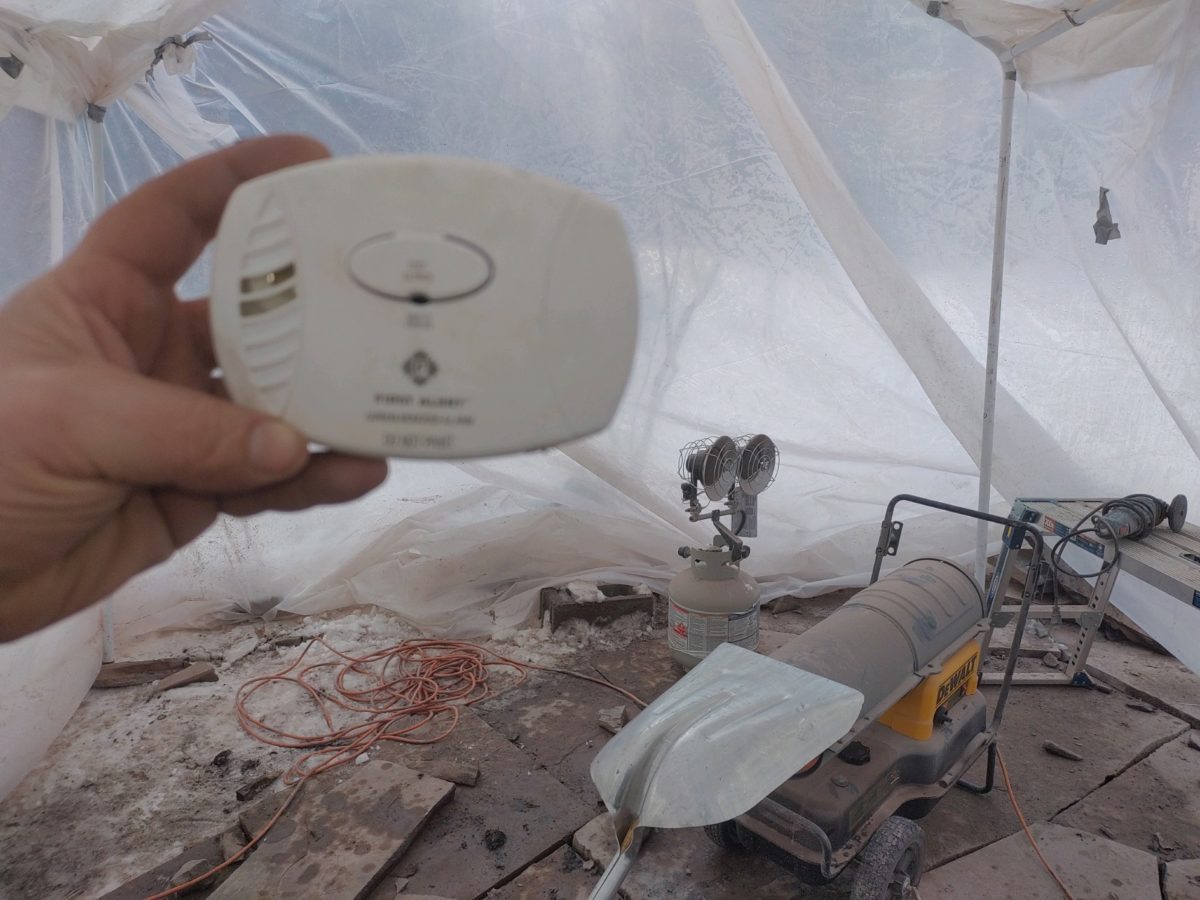building a heat tent
How to do stone work in the winter time. One common method is to set up scaffolding as the frame for your heat tent, and then drape a large sheet of plastic over it. This method works well and is pretty fast to set up and furthermore it is customizable to whatever shape your jobsite is. The downsides here are that scaffolding is heavy. Also, since you’re setting it up to different configuration each time, you’ll likely end up having to replace the plastic each time.
Another option is to buy a canopy and modify it so it has sides. Here’s a 20 x 10 canopy, with a 20 x 100 sheet of greenhouse plastic wrapped around it:

You can save a bit of money and just buy a 60′ x 20′ sheet of greenhouse plastic to wrap the sides with. I bought the larger one figuring we’d make use of the extra material. The greenhouse plastic is just tucked into the frame of the canopy with duct tape used as needed. Clamps, string, magnets or staples could be used, whatever, no need to overthink it just make it work.

Here we were building a flagstone patio in the winter.
The excavation work had been done before winter set in. Road base gravel installed and compacted, before the winter freeze set in. Heat tent was set up, and flagstones installed in the warmth. Flagstones were cut mostly by hammer, to prevent a dusty indoor situation. Other stones were carried outside of the tent, and cut with power tools.
The third option here is to just buy a portable garage aka plastic carport. This method works well, but is less customizable than the other two methods. Also the roof and sides take a bit longer to set up, compared to the other two methods. Personally then, I would only use the portable garage in the even when I know we won’t need to move the tent around at all or re-set it up multiple times.
Portable heaters for working in winter
We use both propane and kerosene heaters. The forced air kerosene heater warms up the heat tent really fast, the propane is there as back up. 20 degrees outside today and the kerosene heater is turning itself on whenever it gets too cold, and turning itself off again just when it begins to get way too warm in here. The carbon monoxide sensor has been tested and works, but hasn’t gone off once at all this week. Apparently these heat tents are not air tight and generally the air stays healthy enough in here–but it’s good to know for (more or less) certain!
On warmer days when it’s below freezing but only by a little bit, like 30 degrees or something, we can get by using just the (not forced air) propane heater.
Use a carbon monoxide sensor to keep yourself and your co-workers safe
Don’t use kerosene in confined space without a carbon monoxide sensor. If you start feeling woozy…hey, it could be because you are out of breath and you just moved a heavy flagstone. Then again, what if you’ve been breathing bad air?

masonry in the winter (protect your mortar from freezing)
Personally I am not a big fan of doing mortared work in the winter, at all. A dry stone wall or even dry laid flagstone work, sure, but mortared work is just too vulnerable to freezing conditions. Mortar and concrete that has been exposed to freezing temperatures before fully setting up, will seem hard. It will look good. But give it a few months, and it may crumble and turn to mush. I’m warning you not to do it! But if you must….
Keep it above 40 for 48
If you are doing work that in anyway involves mortar or other cement based materials, then you’ll need to keep the material above 40 degrees for the first 48 hours. You can add chemicals to prevent your mortar, concrete or stucco from freezing, but with two warnings:
- emhydro/thero-lube and similar winter time mortar additives are not to be used in contact with rebar. If you are doing veneer work or stucco and have wire lathe to hang up, then you can’t just go an do your scratch coat/brown coat over the lathe. Not if emhydro or thermo lube or anything like that is mixed into your mortar. Rebar in your concrete–same deal, the additives will cause any steel reinforcement to corrode and rust faster.
- personally, if I had to use a product like this, I’d still do everything I could to keep the material above freezing.
- to keep our material above freezing, we’re going to want to a) build a heat tend and/or b) purchase concrete heat blankets
concrete heat blankets
Concrete heat blankets may come in handy if you ever have to do work when it’s below freezing, or when it’s expected to get below freezing overnight. You can set up a heat tent to work in…but what about overnight? Leaving a propane or kerosene heater going overnight without supervision may involve risks. Say an animal or a strong wind knocks over your heater, or blows your plastic covering unto the heater–potential fire hazard.
But a concrete heat blanket can be used to just keep the actual material itself warm. So you can set flagstone during the day time, with heat tent, if need be–and then cover it with a heat blanket overnight.
Stay warm and dry
related content:
- consultation services, teaching stone work by the hour
- how to level dry laid flagstone